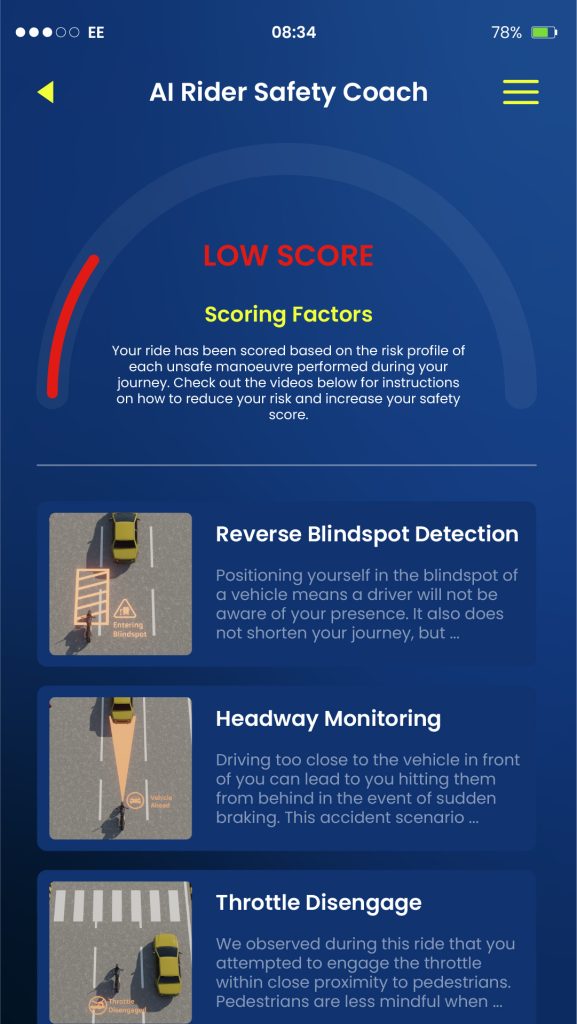Photo by Devanshu Verma on Unsplash
Author: Andrew Fleury, CEO and Co-Founder, Luna Systems
The latest road safety report from India’s Ministry of Road Transport and Highways makes for a distressing read. Sadly, 2022 marked another record year for road fatalities, especially 2-wheeler deaths, which accounted for 75,000 of these fatalities (44.5%, +8% YoY) – making it by far the most deadly mode of transport. These deaths, as well as innumerable life-changing injuries, cost the Indian Government a staggering 3% of its annual GDP each year.
According to McKinsey, 2-wheelers now make up 70% of India’s 326 million registered vehicles on the road. The Indian Government has made commendable efforts through various subsidies, such as FAME II [Faster Adoption and Manufacturing of Electric Vehicles], to boost the electrification of this vehicle segment, and it is well on track to achieving 70% conversion by 2030. Coupled with the high cost of fuel and the comparatively low cost of electricity, sales are only set to increase – as will the safety challenge.
Scalable ARAS & AI Coaching for 2-wheeler Riders
With our partner Qualcomm Technologies, we look forward to showcasing our new 2-wheeler solution at the CES tech trade show in Las Vegas next month, which features both in-ride ARAS and post-ride safety coaching features.
Our ARAS features have been built specifically for the 2-wheeler market and are designed for the busy traffic conditions on Indian roads. We use a camera-based ARAS system to detect when a 2-wheeler is at a heightened level of risk or in a suboptimal road position. Our philosophy with this solution is to nudge the rider towards a better road position. With small nudges towards safety, we can dramatically reduce the exposure time of the bike in a risky scenario and make riders more conscious of their positioning. We describe the experience of this solution as like having a riding instructor sitting behind you, prompting you to be mindful of your proximity and position relative to other vehicles while riding, overtaking, and more.
Applying a CV-centric solution in an Indian road context is, of course, no easy feat. Congested streets, limited road markings, as well as risky rider and driver behaviours, result in an extremely challenging environment. Our solution is not only scalable but has been built to understand the context of such environments, and to provide reliable prompts that encourage riders to be more mindful of their positioning as they ride.
Supporting each rider’s safety skills
Leveraging sophisticated AI techniques, we are able to detect any dangerous manoeuvres undertaken by a rider – without needing to capture the entire journey. Once a rider concludes each journey, they receive a safety score overview via their rider app. Scoring is based on the number of risk scenarios they engaged in during their trip and will also include an AI coaching feature, which provides instructional videos and tips on how each scenario should be safely undertaken. This app will enable riders to track their safety performance over time, and we hope the data could provide a useful tool to OEMs in terms of performance-based insurance incentives, improving vehicle financing outcomes, and much more.

Increasing demand for safety software
One of the biggest mobility trends this year has been the concept of the software-defined vehicle. More consumers are looking for connected experiences and new technological solutions that improve their daily lives. We believe there is significant and growing demand globally, as well as among Indian riders, for technological solutions that will help them improve experience and safety.
Another consistent and worrying trend, which India’s road safety report highlights, is the prevalence of deaths mainly among young, inexperienced riders. In these scenarios, risk-taking behaviour is a significant contributing factor, which is widely recognised and reflected in the statistics. Many young riders also rely on family to finance their first vehicles. We believe that in these scenarios leveraging safety scoring could play a role in helping these younger riders to take safety seriously from an early stage, while also providing peace of mind to their loved ones.
We look forward to engaging with OEM partners over the next year and building solutions that best accommodate their specific needs and requirements and to making a positive impact on 2-wheeler safety.
2023 has been an incredible year for us. We started off in 2020 with the goal of leveraging computer vision to make scooters a safer experience, but along the way, we have consistently challenged ourselves to look at other ways we could contribute to helping people confidently embrace a carless future. This year, while we continue to support our shared micromobility and city partners, we also launched a consumer e-bike product in partnership with a global OEM and look forward to marketing this also in the following months.
If you’re heading to CES next month and would like to schedule a demo with Luna Systems, reach out to info@luna.systems.
